Although e-cigarettes emerged about twenty years ago as an alternative to smoking, their prevalence and use have become increasingly problematic.
Governments and regulators are now playing catch-up with what is widely considered an addictive and dangerous product. Australia has just passed a world-first bill to ban all vapes from retail later this year.
Currently, the most common vapes on the market are single-use disposable products designed to appeal to younger people. Despite their short lifespan, vapes are complex products that contain several valuable resources.
However, there is no practical way to collect or recycle vapes. Most end up as e-waste or electronic waste in landfills. Some are simply thrown out on the street as trash. So what’s actually inside vapes?
How do vapes work?
Vapes can be classified as reusable or disposable (single use), the most common option.
Reusable vapes feature a rechargeable battery and refillable cartridges or liquids that come in a dizzying array of flavors. More elaborate vapes contain microprocessors with customizable features, colored LEDs, and even small colored screens.
In their simplest configuration, disposable e-cigarettes have the same components as all other types of e-cigarettes. E-cigarettes contain a battery, a pressure sensor (like a modified microphone), an LED light, a heating element, and a tank containing e-liquid (the “juice”).
When the sensor is activated by pulling on the device, the battery provides power to a heating element that vaporizes or atomizes the liquid.
Dismantle a single-use vape
Analogous to the study of anatomy, teardowns are a technique used by industrial designers and design engineers to systematically disassemble a product.
This allows us to identify and describe internal components and their relationships within a product. It can provide useful information about materials, manufacturing processes, assembly and technology.
Likewise, it can provide information on the reparability, scalability and ease of disassembly for end-of-life recovery of potentially valuable or harmful materials.
We obtained a random selection of commonly found used and single-use vapes to disassemble, identify, and describe what’s inside them.
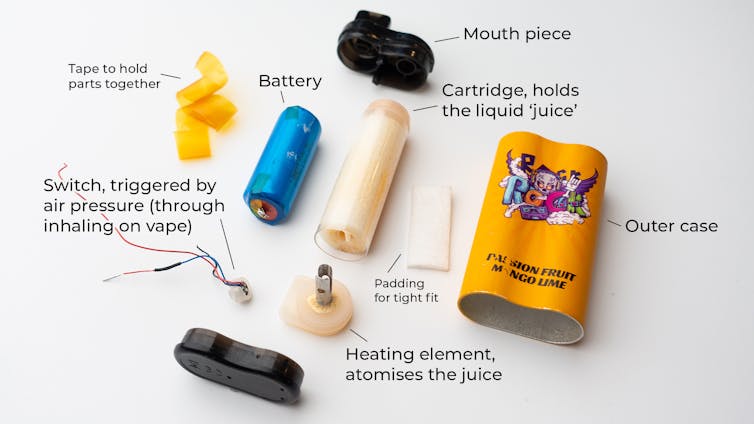
Accommodation
Disposable vapes are not designed to be taken apart. The main housing is made of aluminum and covered with a painted and graphic finish, closed at the ends with plastic parts.

Once the housing end caps are removed, which is often not a simple task, the internal assembly slides out.
These internal parts are jammed or glued together in the main housing, and the battery terminals are soldered to wires connected to a pressure sensor and a heating element built into an e-liquid tank.
Battery
While disposable vapes aren’t rechargeable, the ones we took apart all contained a lithium battery. While much smaller, they’re not unlike the batteries found in products like power drills and electric vehicles.
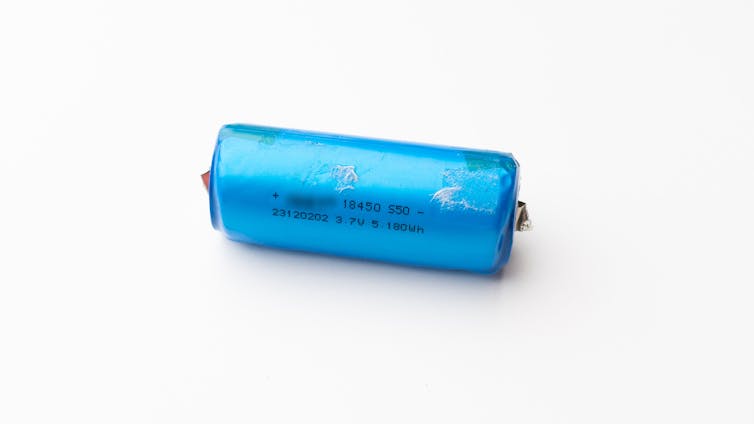
These cells have high power density: they can store a lot of electrical energy in a relatively small format. This is necessary to provide periodic bursts of energy to the heating element and to outlast the supply of e-liquid in the tank.
All of the batteries we tested when disassembling exhausted single-use vapes still maintained a charge capable of powering a test bulb for at least an hour.
Pressure sensor
An atmospheric pressure sensor is a semiconductor switching device. Much like a microphone that converts vibrations into electrical energy, the pressure sensor detects a drop in pressure and closes an electronic switch.
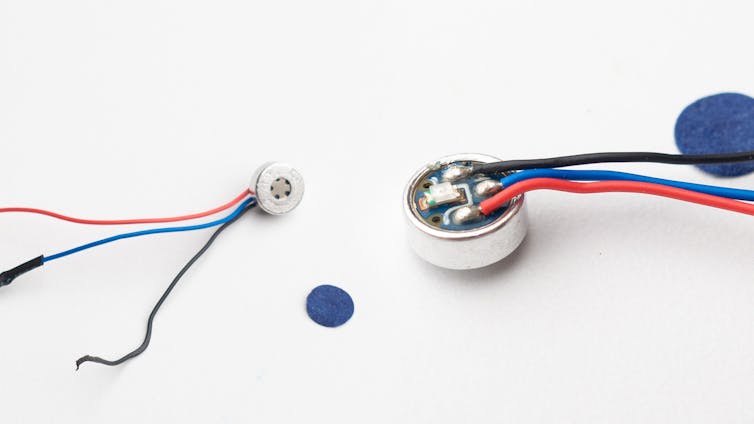
This occurs during the action of drawing on the vape, which creates a partial vacuum within the device. When the switch is closed, a single (short) turns on an LED and provides current to the heating element.
Heating element: spray
The heating element is embedded in a cap at one end of the e-liquid tank and connected to a wick. When the device is activated, an electric current heats a metal strip which vaporizes some of the volatile e-liquid.
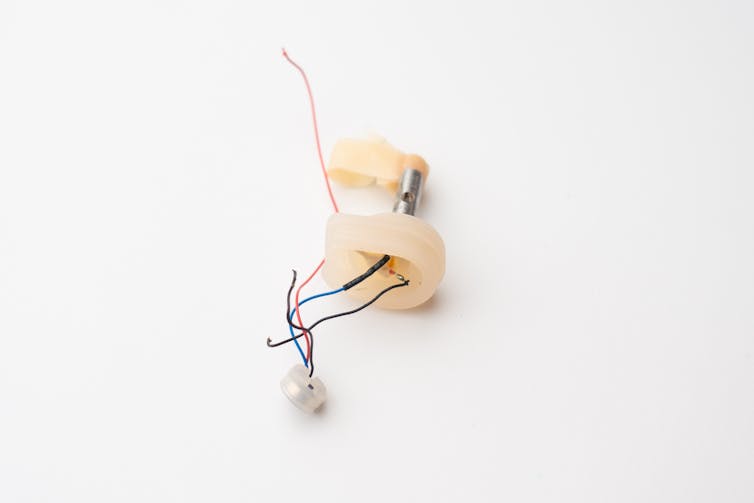
The e-liquid tank
Disposable vapes contain an absorbent foam material saturated with e-liquid and contained in a plastic tube with silicone tips.
In the center of the tank is an absorbent material that draws the surrounding e-liquid into contact with the heating element.
The e-liquid itself contains a range of ingredients such as propylene glycol, nicotine and flavorings, many of which have unknown health effects.
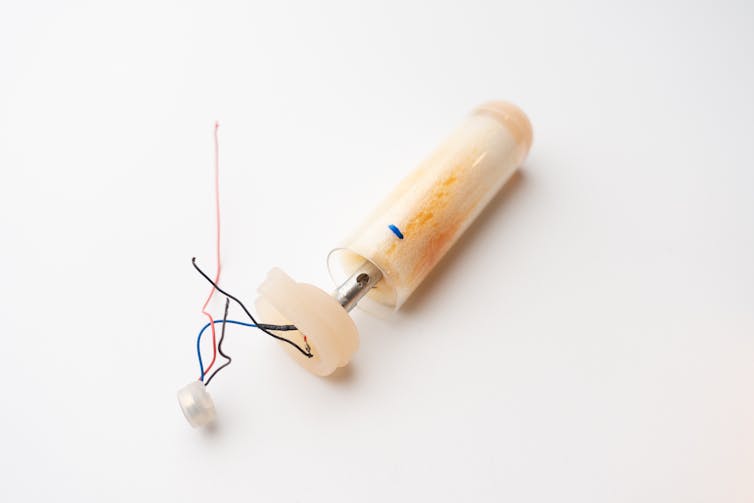
Designed for discharge
E-cigarette consumption has exploded in recent years and they now represent a significant portion of an alarming new category of e-waste.
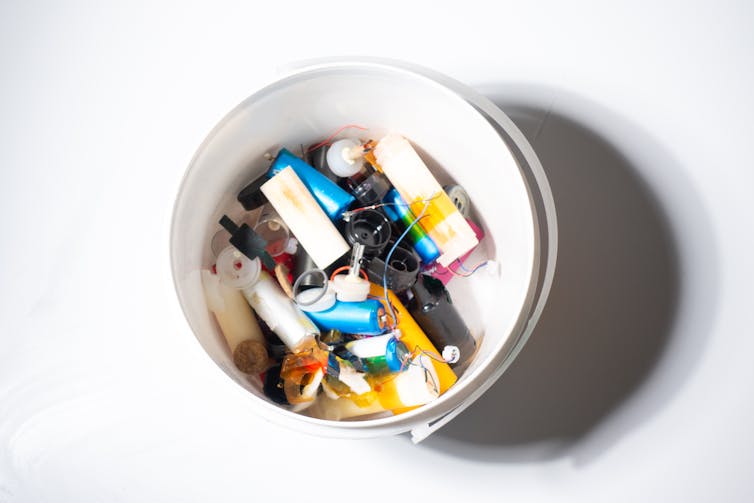
Single-use e-waste leads to significant loss of valuable materials, including aluminum and lithium.
Worse yet, when a disposable vape is thrown in the trash, the energy-dense lithium batteries pose a fire hazard to waste management workers.
The materials in vapes also have toxic effects on the environment when released.
Mixing potentially valuable metals with other low-value materials, such as plastic, makes e-cigarettes difficult to separate and recycle. Overall, single-use e-cigarettes are clearly a waste of resources and are harmful to the environment.![]()
Miles Park, Senior Lecturer in Industrial Design, UNSW Sydney
This article is republished from The Conversation under a Creative Commons license. Read the original article.